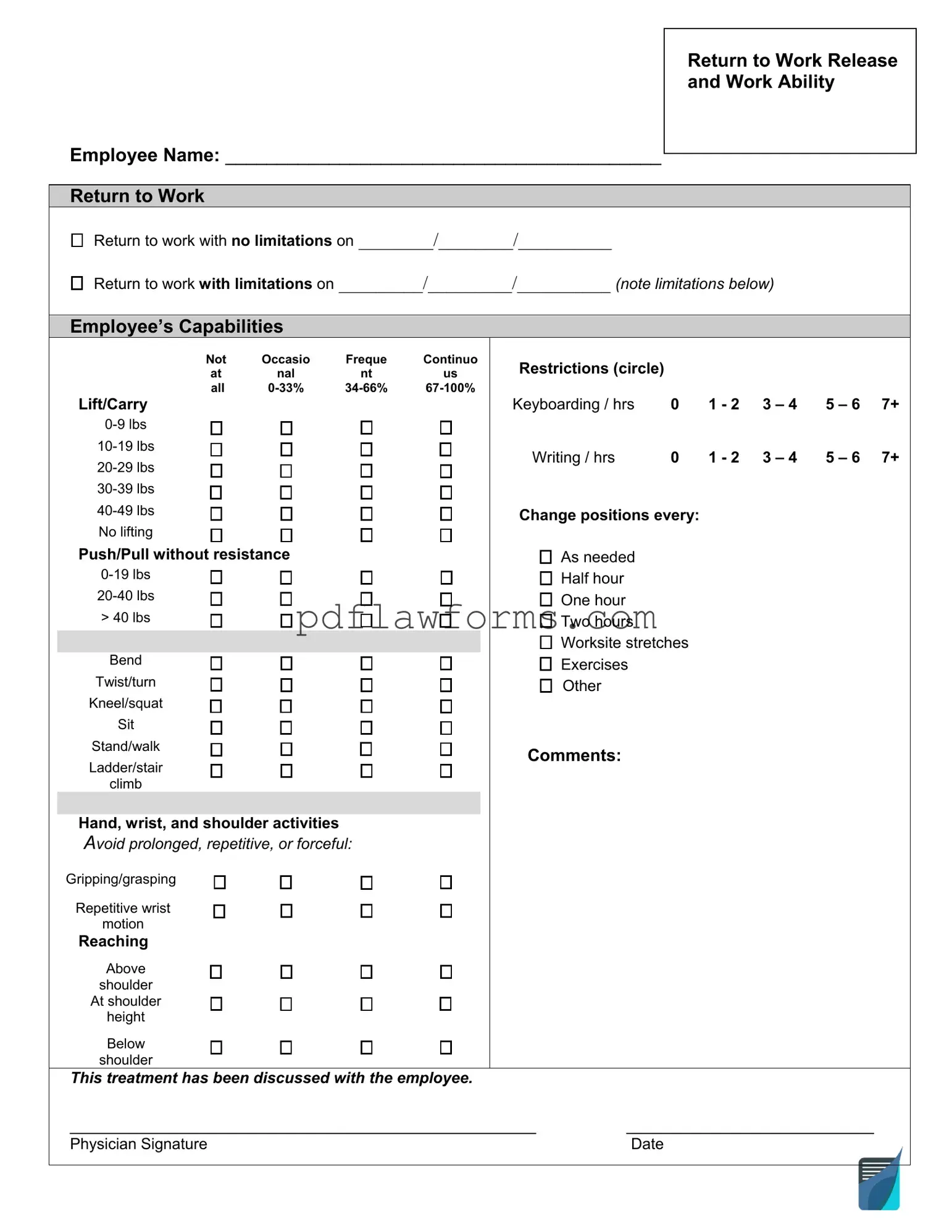Filling out a Work Release form can seem straightforward, but many individuals make common mistakes that can lead to delays or complications. One frequent error occurs when applicants do not provide accurate personal information. This includes misspellings of names, incorrect addresses, or outdated contact information. Such inaccuracies can hinder communication and create confusion regarding the applicant's status.
Another common mistake involves failing to disclose all relevant employment details. Applicants may overlook including previous job titles or employment dates. This omission can lead to misunderstandings about the applicant's work history and qualifications. It is essential to provide a complete picture of one's employment background to ensure proper evaluation.
Many people also neglect to read the instructions thoroughly before completing the form. Each Work Release form may have specific requirements or additional documentation needed. Ignoring these instructions can result in incomplete submissions, which may be rejected or returned for further information. Taking the time to review all guidelines can save applicants from unnecessary frustration.
Additionally, some individuals underestimate the importance of signatures and dates. Failing to sign the form or provide the date of submission can render the application invalid. A simple oversight in this area can lead to significant delays in processing, so it is vital to double-check that all necessary signatures are included.
Another mistake involves not keeping a copy of the completed form. Once the form is submitted, applicants may forget the details of what they provided. Having a copy can be beneficial for future reference, especially if questions arise during the processing of the application. It serves as a record of what was submitted and can help clarify any discrepancies later on.
Lastly, some applicants may rush through the process, leading to careless errors. Taking the time to carefully review the entire form before submission can help catch mistakes. A thoughtful approach can make a significant difference in the outcome of the application. Ensuring accuracy and completeness fosters a smoother process for all parties involved.
